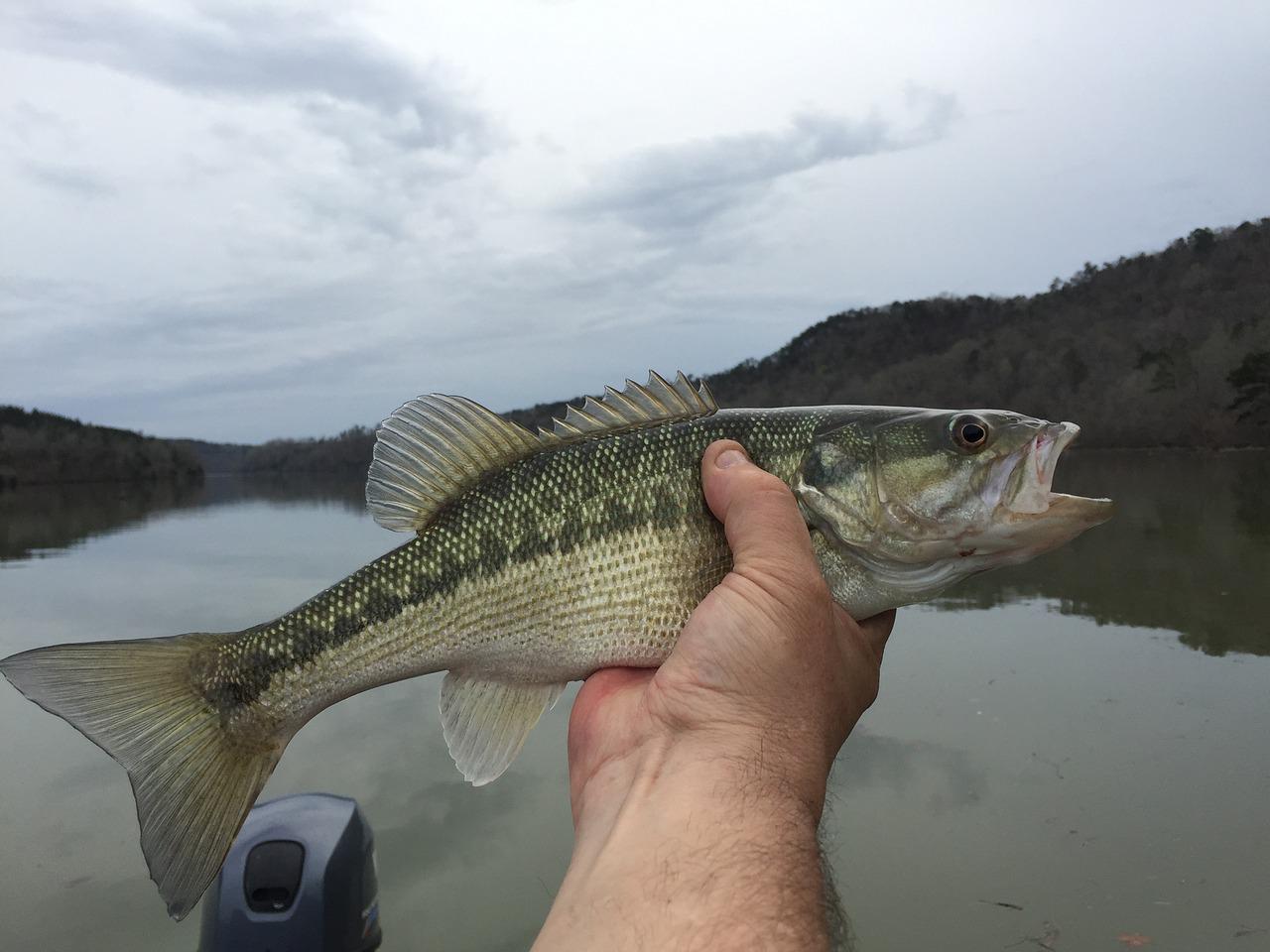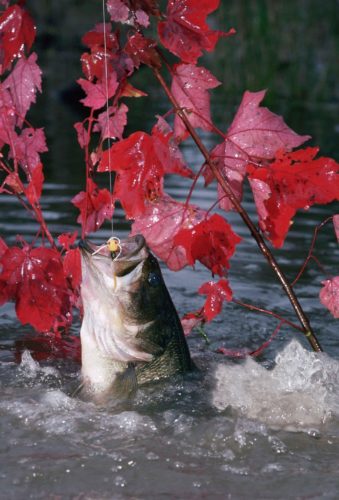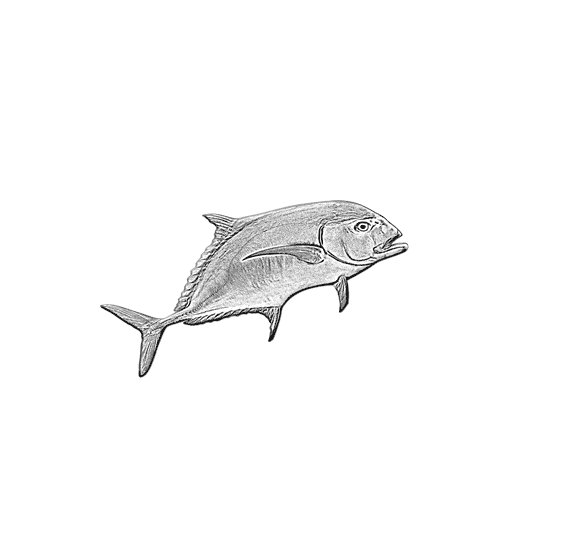
The Differences Between Spotted Bass and Largemouth Bass
Do you know the distinctions between spotted bass and largemouth bass?
Anglers in the United States target largemouth and spotted bass at the top of the popularity rankings for species they pursue.
Both species resemble one another in appearance, which may mislead fishermen. To add to the confusion, both species are typically found in the same bodies of water in places where both are present.
Let’s take a deeper look at what differentiates these two species and how to recognize them, as well as their ecological preferences and geographic range.
Spotted Bass Habitat and Range

Range
Spotted bass inhabit the basins of the Ohio and Mississippi rivers, as well as the Gulf coast states from Texas to Florida, eastward.
Additionally, the spotted bass has been introduced to non-native states like as North Carolina and Virginia. Additionally, the spotted bass has been introduced to South Africa, where it has formed colonies in isolated waters and is now classified an invasive species.
Habitat
Despite inhabiting the same bodies of water as largemouth bass in their respective ranges, spotted bass have slightly distinct preferred habitats. It favors waterways with higher current than largemouth bass, and compared to other species, such as the smallmouth bass, they prefer significantly warmer water.
They concentrate around aquatic vegetation, submerged logs and lumber, riprap, rocks, and docks, among other locations, as do the vast majority of predatory fish. While largemouth bass may be found in deepwater locations, spotted bass can be found up to 30 feet deeper in the water column.
Largemouth Bass Habitat and Distribution

Range
The largemouth bass inhabits virtually all bodies of water in the continental United States.
In addition to being one of the most common species of freshwater fish in the United States, they may also be found in the northern areas of Mexico and the southern provinces of Canada.
They have been introduced to many different parts of the world. Japan, Europe, Central America, and Africa all include populations.
Habitat
As stated before in this piece, largemouth bass can and will inhabit the same habitats as spotted bass, but largemouth bass also occupy numerous locations where spotted bass do not exist.
Largemouth frequent regions with submergent and emergent vegetation, such as weed beds and lily pads, as well as areas with wood, stumps, and brush, such as river and lake shorelines.
They occupy deeper water, as well as deep shelves, rock bars, and rockpiles, as well as the lake’s basin, where they suspend and feed on baitfish schools.
Anatomical Differences Between Largemouth and Spotted Bass
There are structural distinctions between the spotted bass and largemouth bass, despite their similar appearance. Let’s examine these distinctions so you can distinguish between the two species.
Jawline
The spotted bass’s jawline is one method to distinguish it from the largemouth bass. The jawbone of a spotted bass will not extend beyond the fish’s eye. If you visualize a vertical line extending from the eye, the jaw will end there.
Largemouth bass have a longer jawline that extends beyond the fish’s eye.
Dorsal Fin
Observing the dorsal fin is perhaps the simplest way to detect whether or whether you are holding a spotted or largemouth bass.
The dorsal fins of spotted bass are fused into a single fin, and while the morphology of the dorsal fin resembles that of largemouth bass, the largemouth has a distinct distinction between the two upper fins.
If the two dorsal fins of what looks to be a largemouth are linked, you are likely holding a spotted bass if you are fishing in waters that contain both species.
Cheek Scales
Although this distinction is difficult to observe until the two species are side-by-side, the cheek scales on each species are distinct and can help anglers distinguish between spotted and largemouth bass.
The spotted bass’ cheek scales are significantly smaller than those of the largemouth bass.
Coloration
Once you know what to look for in terms of markings and coloring, you will be able to readily separate the two species, and it will likely be the simplest method to do so.
Largemouth bass have patterns that run down the sides of their bodies, although they are not nearly as apparent as the lateral line on spotted bass.
A spotted bass’s bottom side scales below the lateral bar leading to the belly contain black spots. Largemouth lack this quality.
Spotted bass have distinct black markings that extend from their upper flanks to their backs. These characteristics are either nonexistent or extremely weak on largemouth fish.
Other Distinctions
It’s noteworthy to note that the lifespan of largemouth bass is around 16 years, but the longevity of spotted bass is less than half at 6 years.
Largemouth bass are also quite acrobatic when hooked and fought to the boat or beach, whereas spotted bass have a tendency to dive to reach deeper water.
Bass Feeding Habits
The eating patterns of both species are quite similar, with just minor differences.
The feeding behavior of spotted bass falls between that of largemouth and smallmouth bass, with spotted bass actively feeding on other fish roughly half as often as largemouth. This makes them considerably less predatory in terms of eating other fish species.
Aside from a few minor changes in food, both species feed mostly on the same prey, including insects, crayfish, and small fish.
Largemouth and Spotted Bass Fishing
Due to their nearly identical diets, you can catch spotted bass with the same baits you would use to capture largemouth bass.
As spotted bass have smaller mouths than largemouth bass, the basic rule for lure selection for spotted bass is to utilize smaller-sized baits.
Since spotted bass prefer fast-moving bodies of water such as small rivers and streams, they may be fished similarly to trout. If you are fishing in these sorts of environments, many of the lures that attract trout will also catch spotted bass.
Final Reflections
Many anglers who fish in regions where both species reside will routinely catch both of these species. And despite the fact that they may appear to be the same fish, there are subtle distinctions that distinguish them as distinct species.
It is crucial to understand this distinction as an angler, as many restrictions and regulations for each species might vary based on the state in where you reside and fish.
See also 8 common fishing mistakes .
